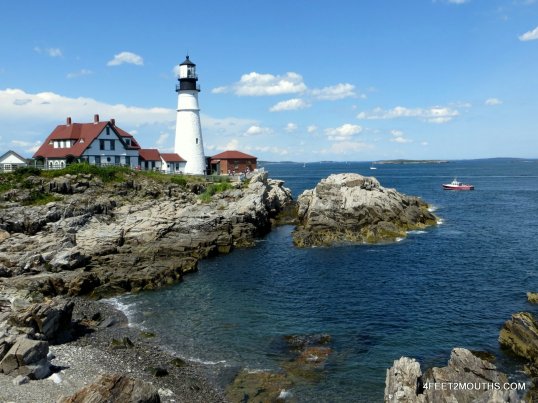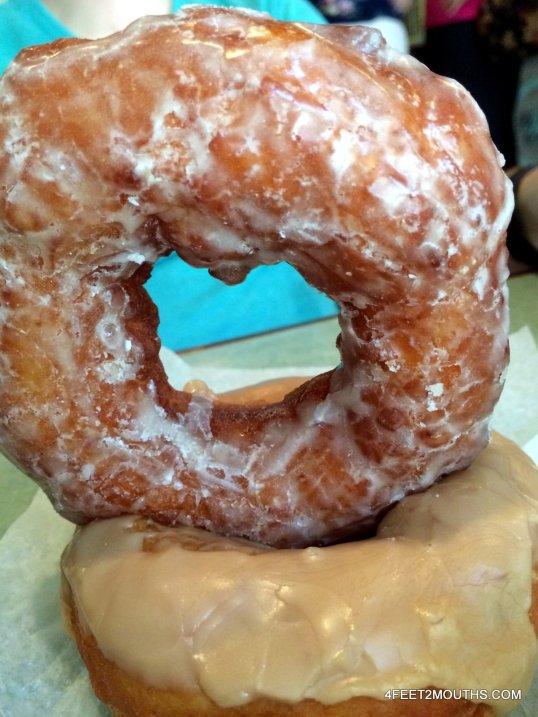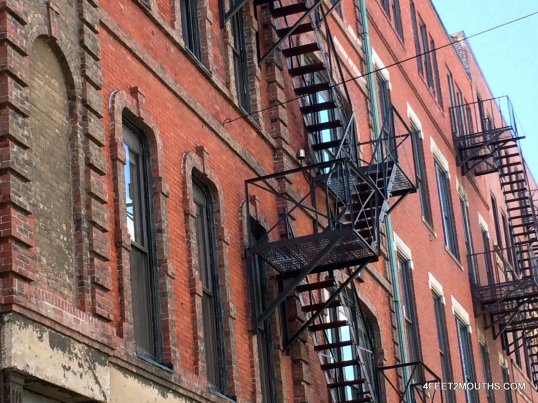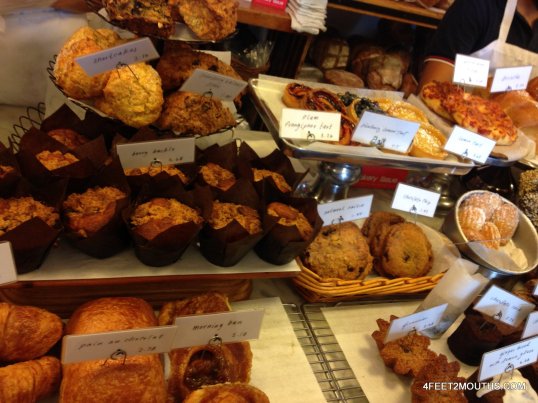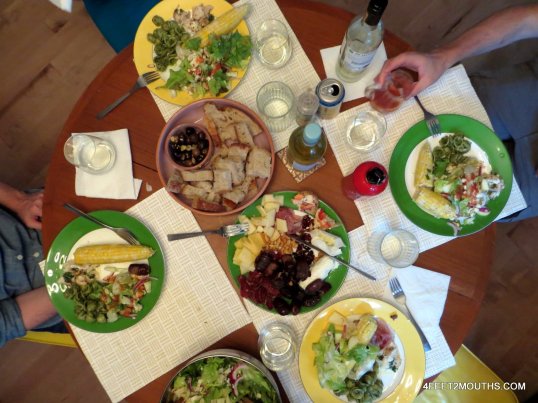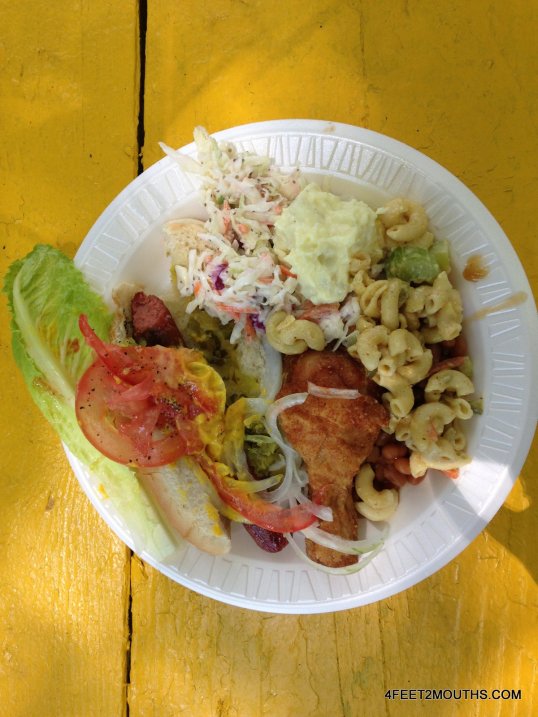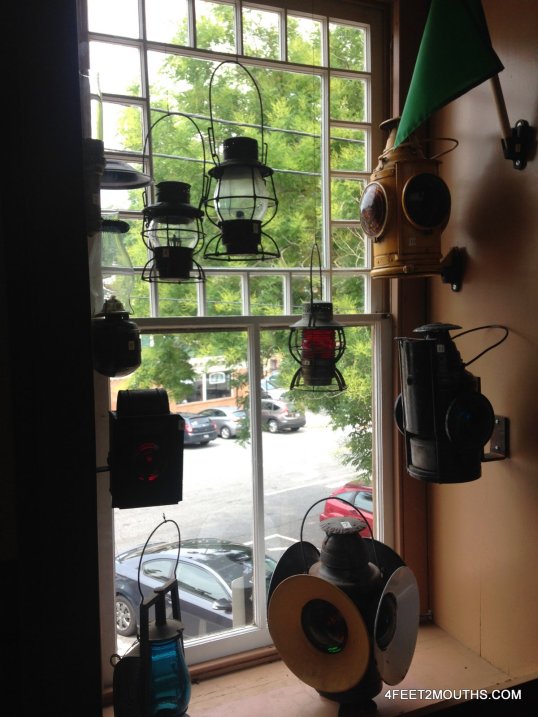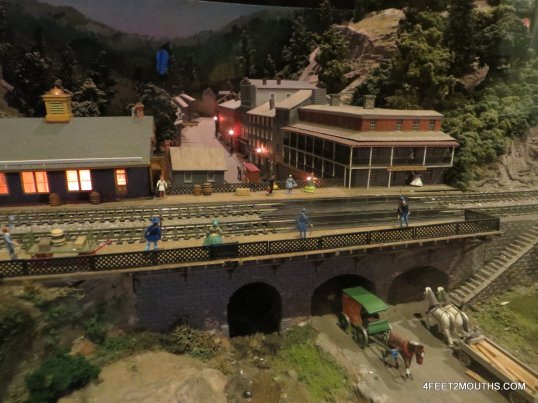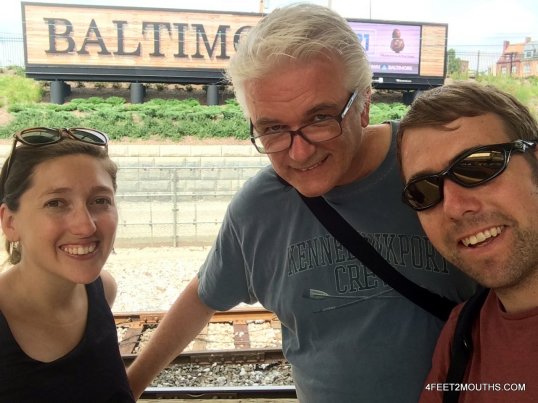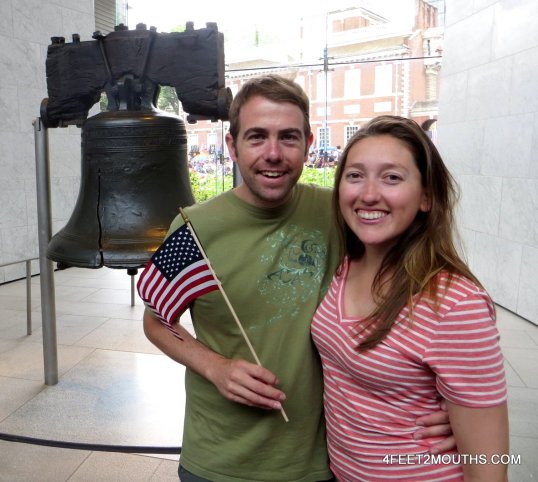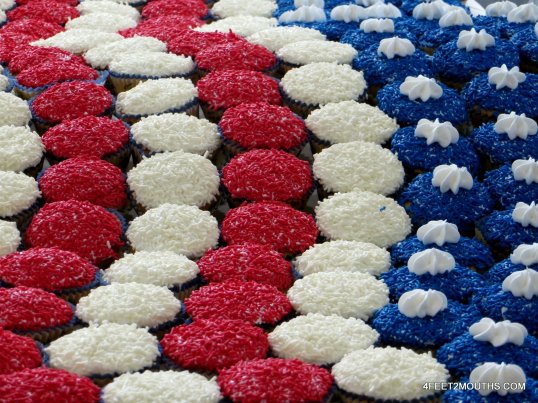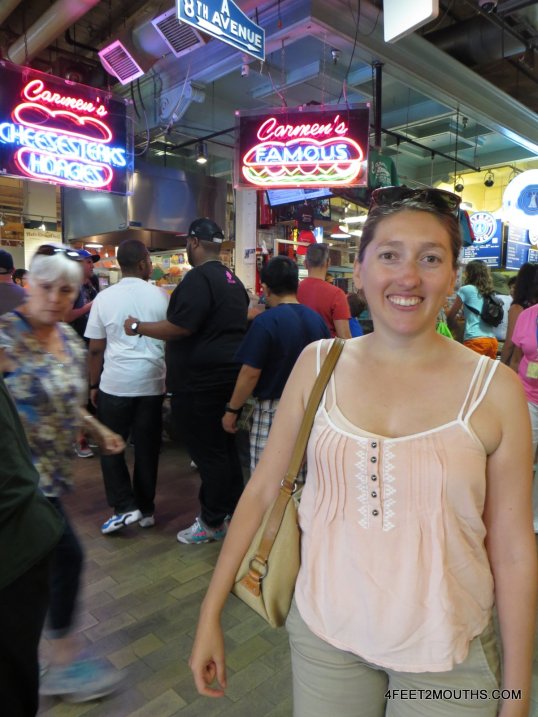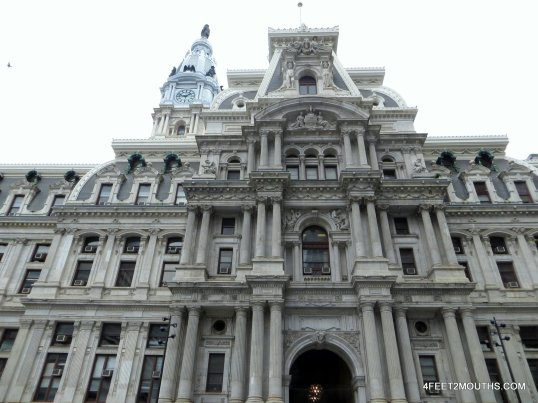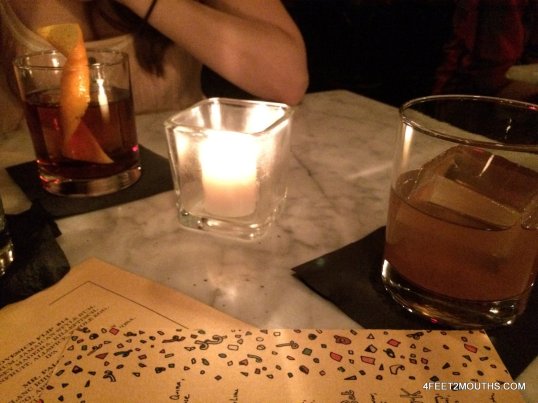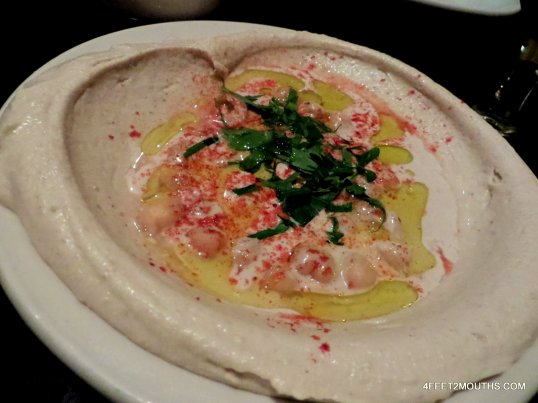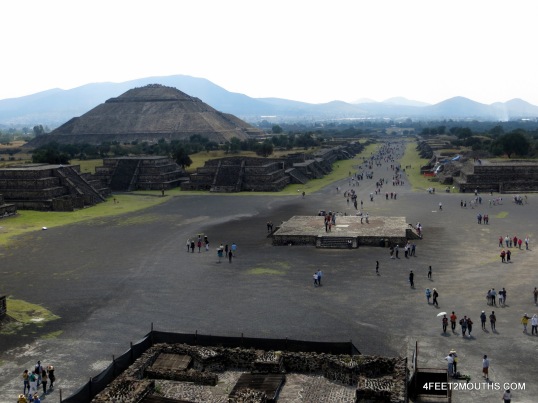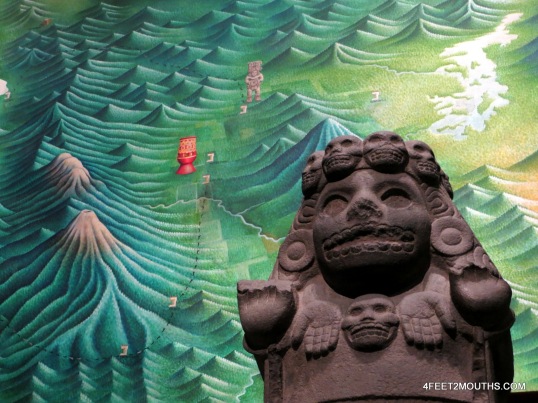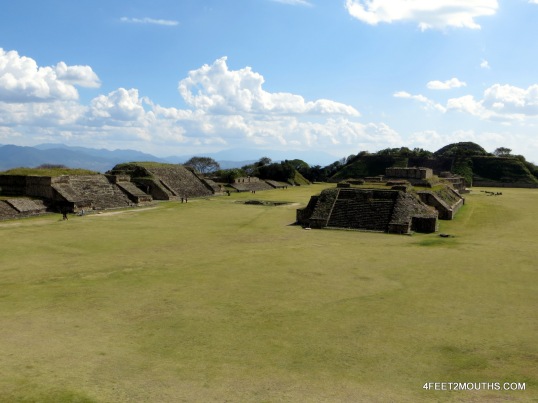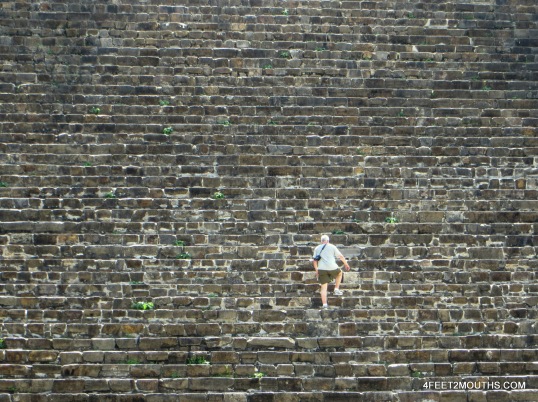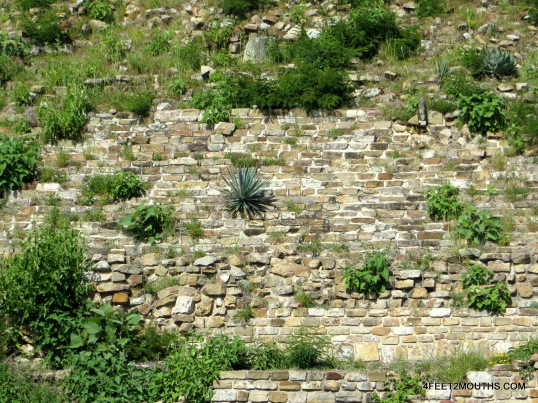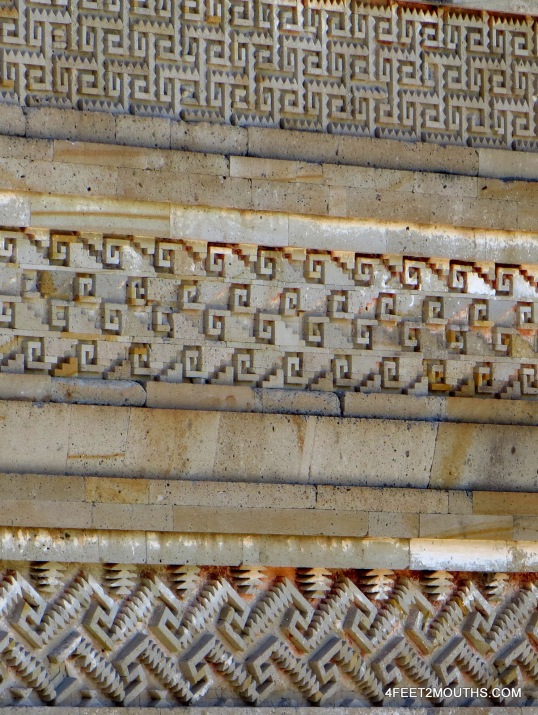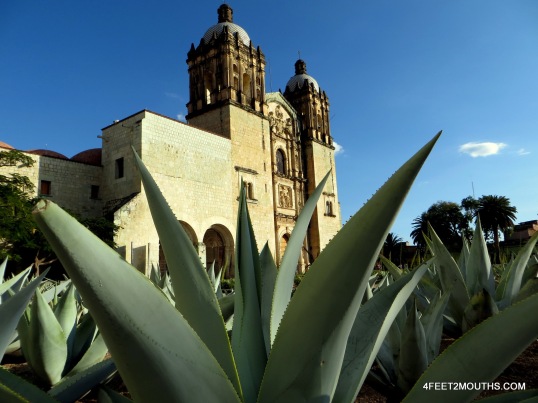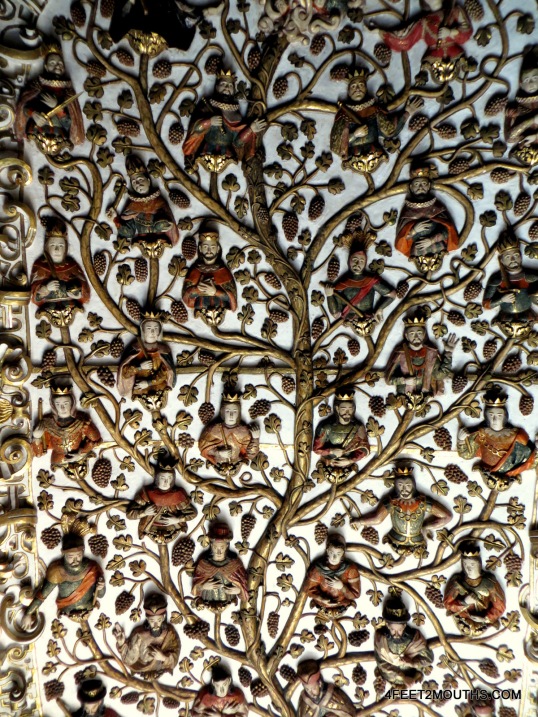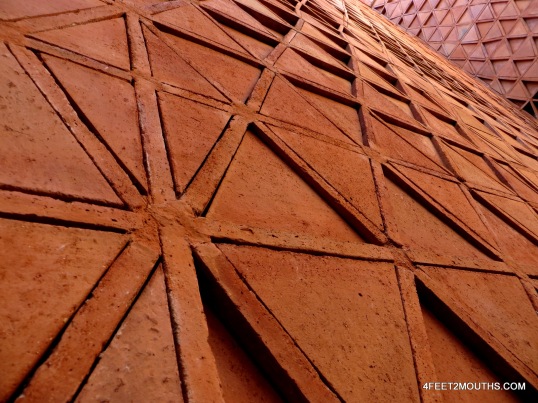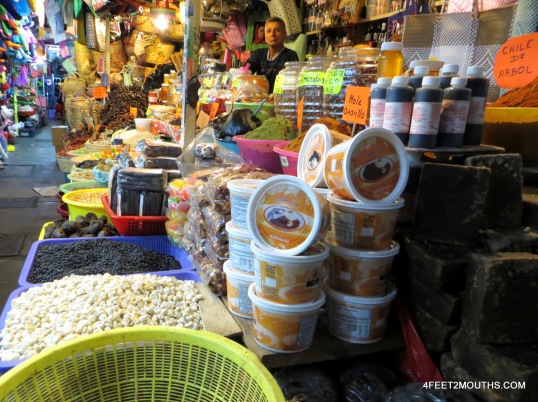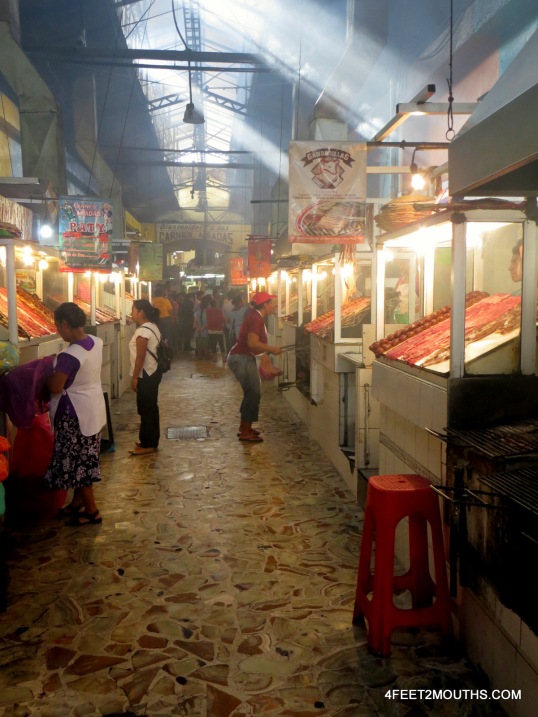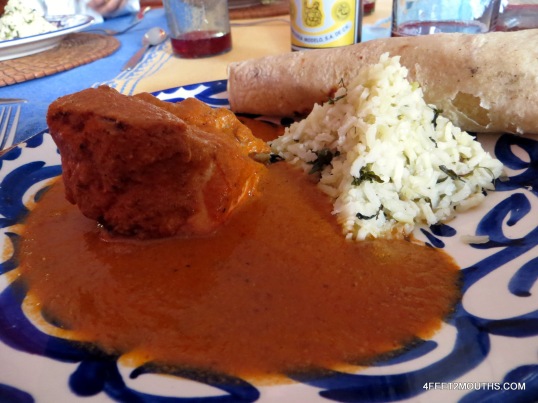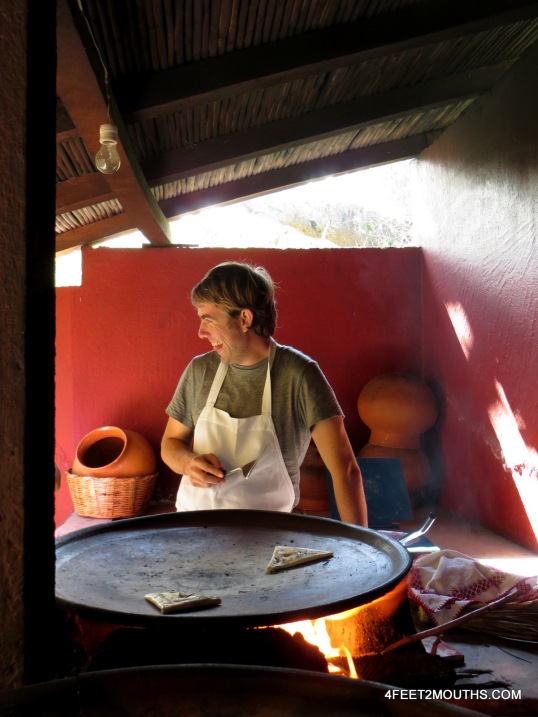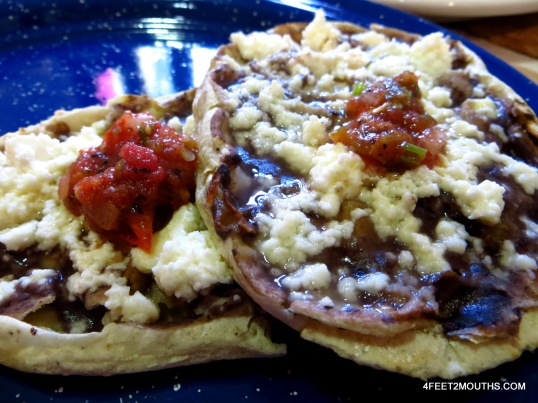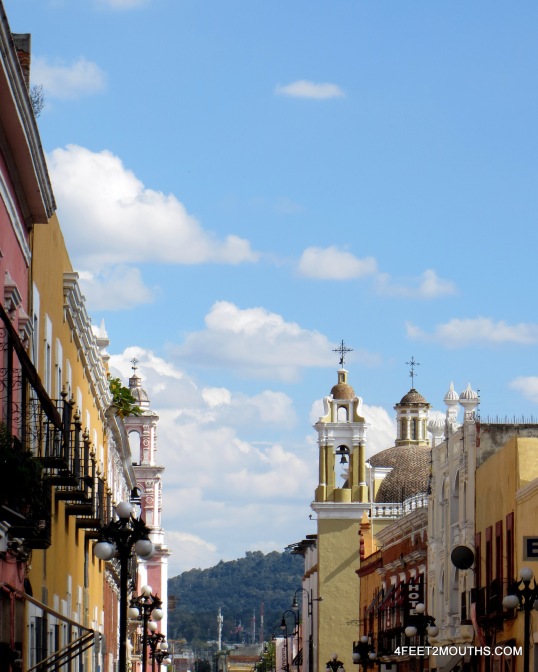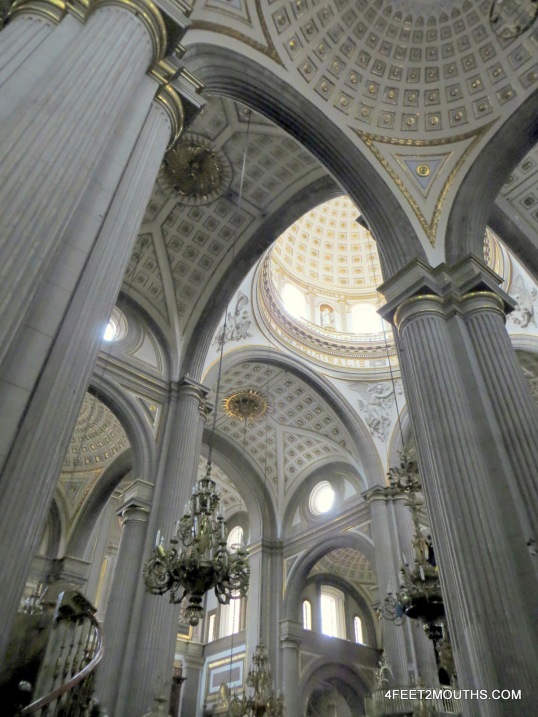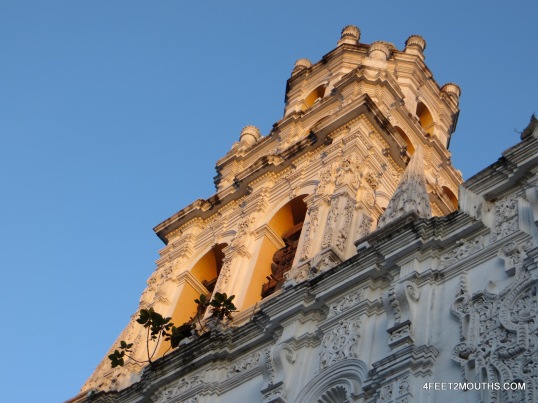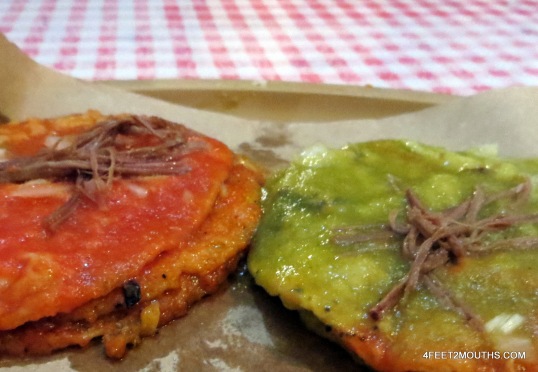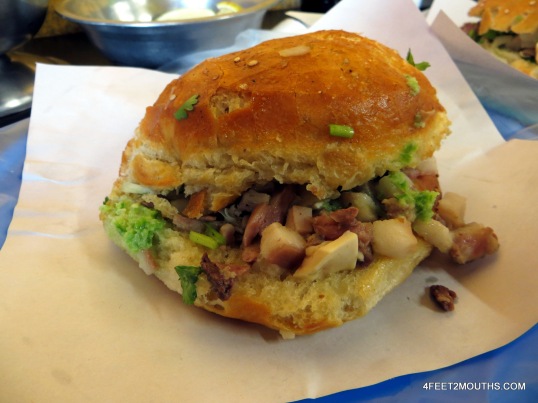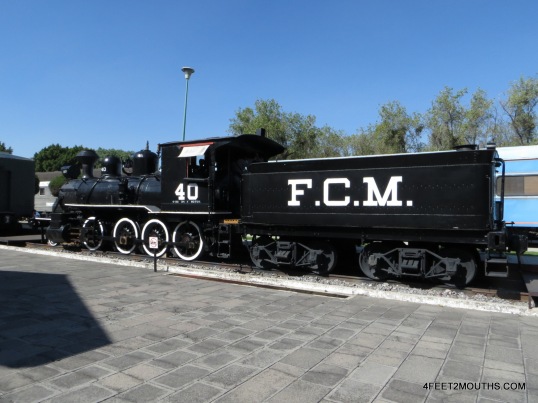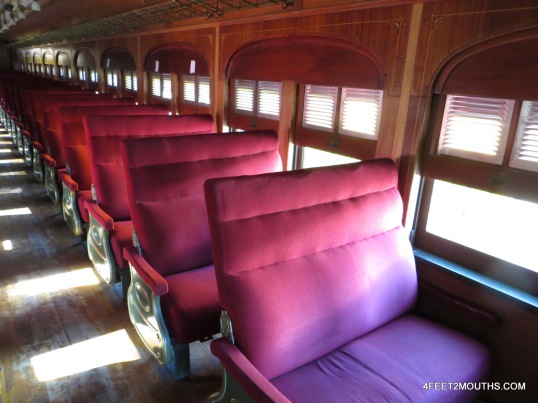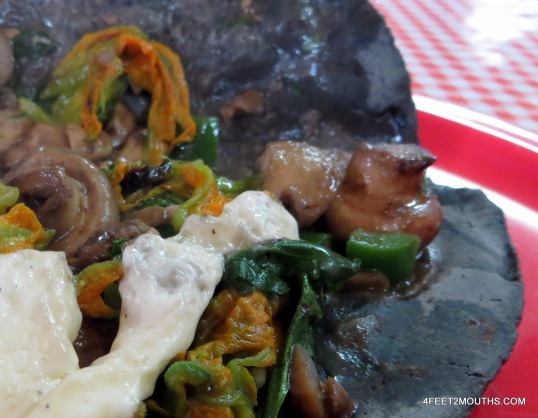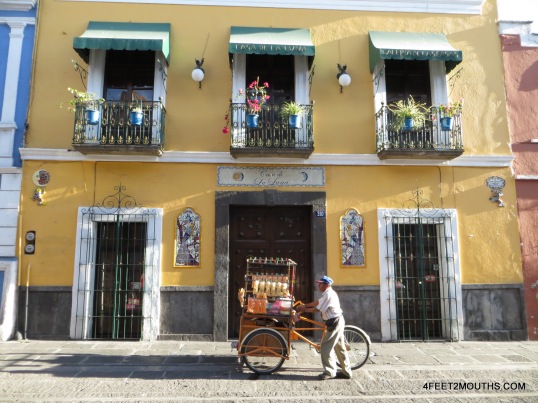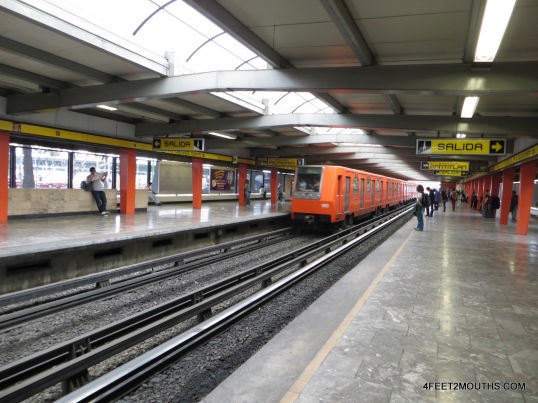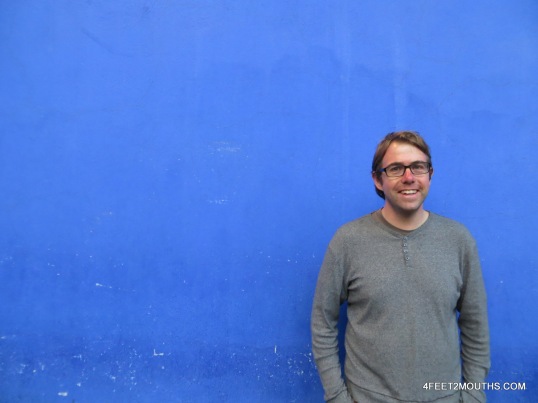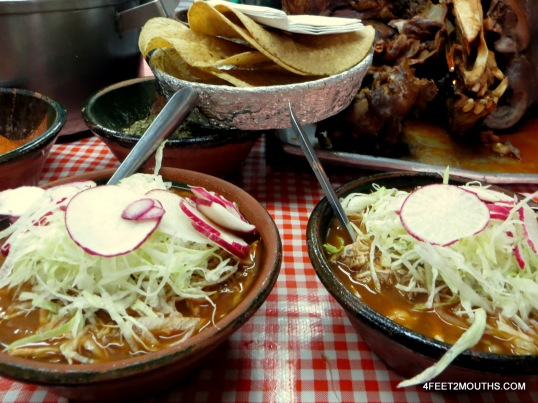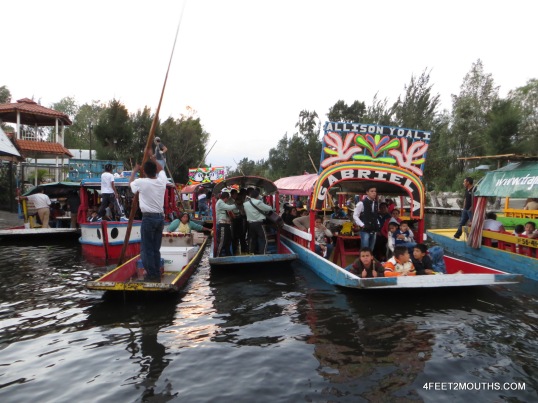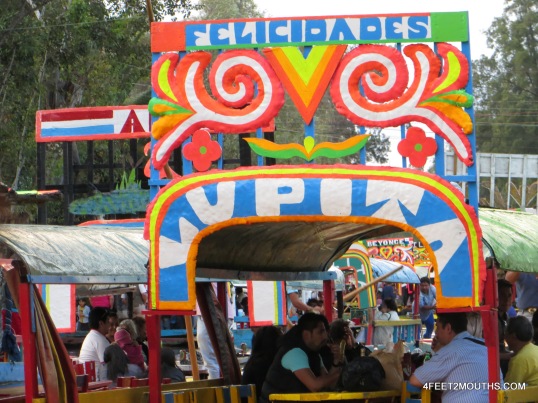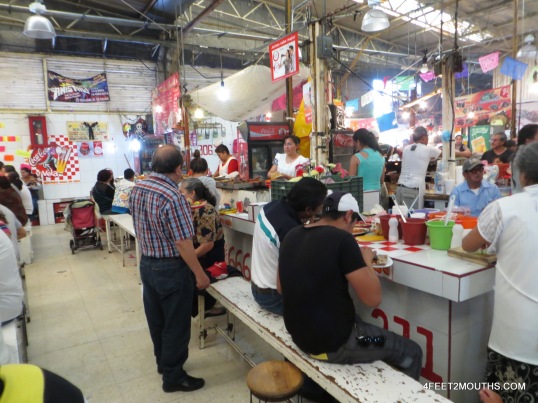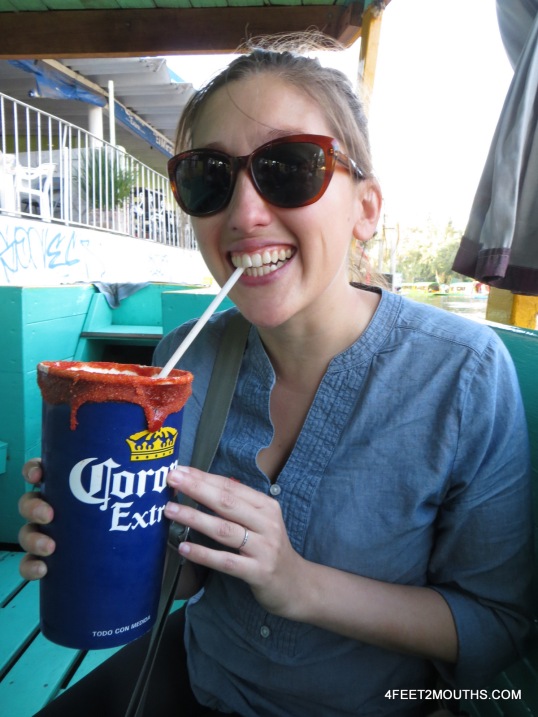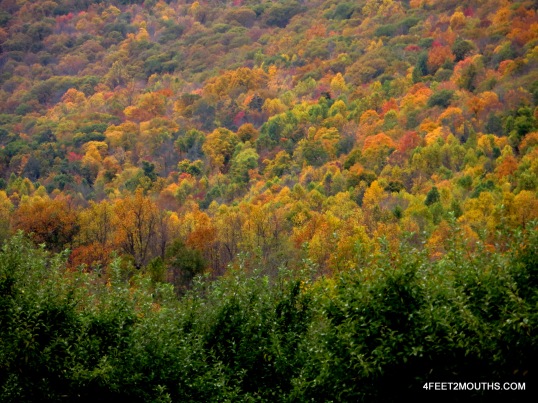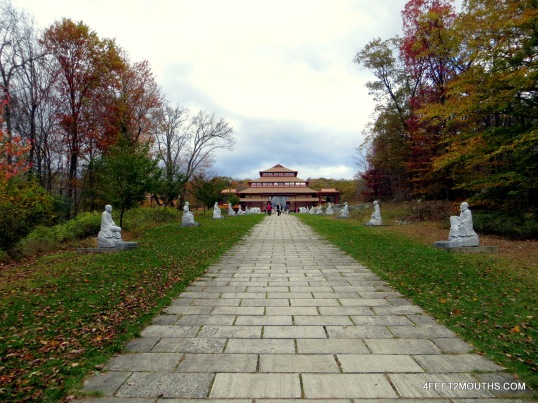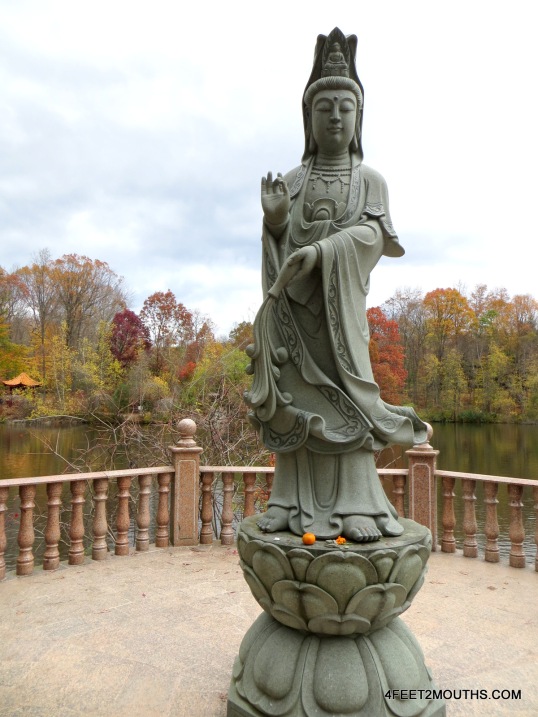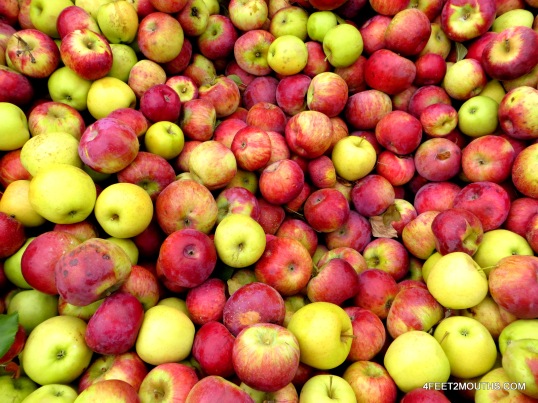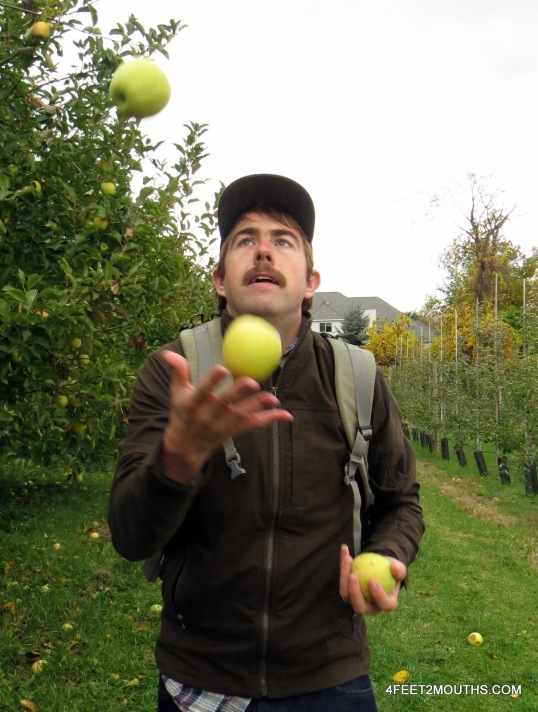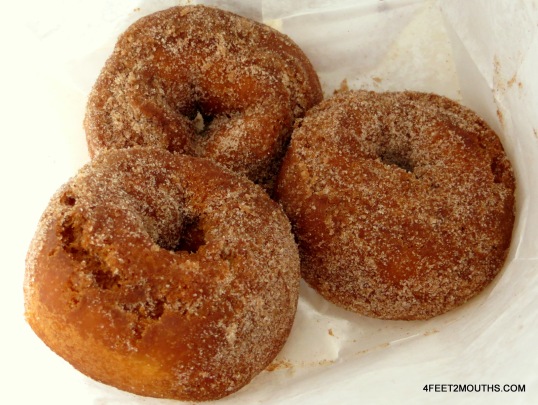After all of our travels around the world, it took much longer than expected to find my way to Mexico. I think it was simply too close to home. In the literal sense, since growing up in Southern California meant I was never more than 150 miles from the Mexican border. On top of that, the huge Mexican population in California means it’s easy to find mariachi or salsa music in the streets, piñata stores and taquerías. And on top of that, I’m half Mexican. So a bit of the culture goes with me wherever I go.

Beautiful church interior in DF
Nonetheless, my visit to Mexico floored me. I thought I knew what I was getting into but at every turn I was humbled by the kindness, beauty and generosity of the people I encountered. The food was fresher and more scrumptious than I thought it could be. The landscapes were grand and varied. In short, it was a welcome international trip after nearly a year and a half of staying close to home.

Zócolo in DF
Nathan and my visit to Mexico began in the capital, Districto Federal (DF). Over our days there we learned the fascinating and lengthy history of this great city. One common thread throughout the turmoil of wars and conquests is that the city has maintained the same main square, known as the zócolo. It’s huge. It’s one of the biggest in the world (after the Red Square in Moscow and Tiananmen in Beijing). Even the word zócolo shows its age as this a word originating from the Aztec language, Nahuatl, rather than Spanish.

Catedral Metropolitana

Catedral roof
On its northern edge, the Metropolitan Cathedral stands guard as one of the first buildings Hernán Cortés ordered to be built after conquering the Aztecs in 1520. If you stand square with the cathedral and look closely, you realize it’s actually kind of tilted. That has to do with the notoriously spongy soil of DF in which the heavy stone buildings fare particularly poorly. Soon enough, Nathan and my game was to point out all the churches, fountains or archways that were obviously sinking in precarious ways. This was pretty much all major structures more than a couple hundred years old.

Pan Ideal
The entire neighborhood surrounding the zócolo is filled with colonial architecture. In one of the more cavernous historic buildings, I noted Pan Ideal. Streams of people were exiting the panadería (bakery) with white pastry boxes decorated with a blue and red floral motif. All panaderías operate the same way, whether a huge one like this or the small ones in your local town: you grab a tray and some tongs when you walk in and fill up the tray with whatever takes your fancy. Take the tray to the counter where they will calculate the amount you owe. Either pay them or head to the cashier with your bill. At Pan Ideal, most people were buying fully trays of pan dulce (sweet bread) such empanadas (stuffed dough pockets), conchas (literally shells; bread rolls with strips of sugar) and orejas (literally ears; flat, thin, crispy pastries). We only had room for a couple pastries which presented some tough choices as there were dozens of options!

Palacio de Bellas Artes
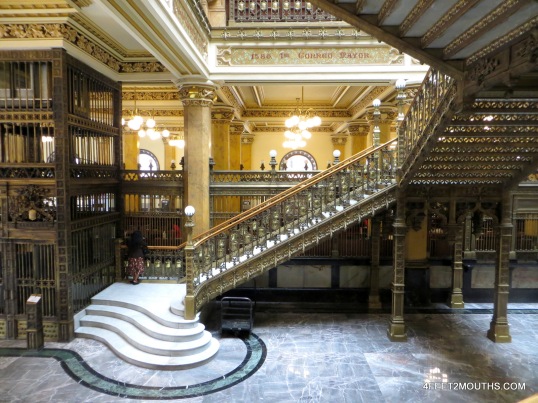
Central Post Office interior
A little further west of the zócolo the narrow streets of the colonial corridors open up to the Alameda, a nicely landscaped park the offers a bit of peace from the crowds. Up against the park’s east side, the colorful tiled dome of the Palacio de Bellas Artes peaks out. Taking many years to complete, this cultural center has a somewhat art nouveau exterior but a geometrically deco interior. Both are stunning. But what really took our breath away was the nearby central post office, covered in gold and intricate metalwork.
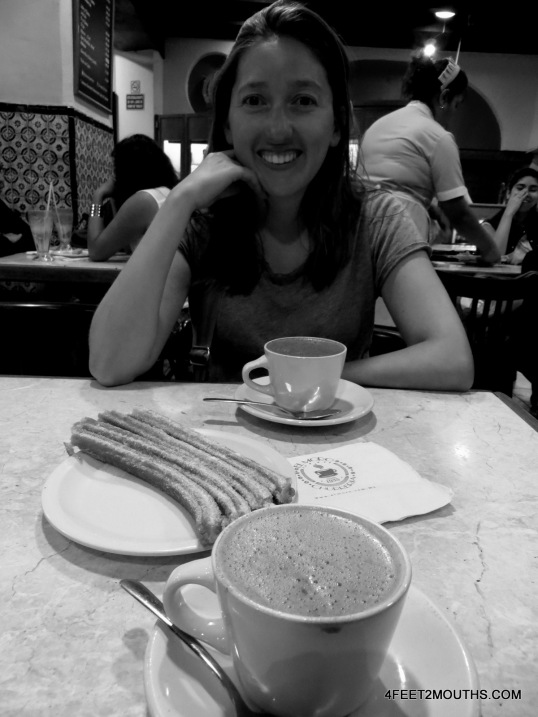
Churros at El Moro
Nearby, we made another sweets stop, this time for churros. Thanks to the ubiquity of churros at American amusement parks and fairs, this is probably the only Mexican dessert most Americans are aware of. Which is too bad given the scrumptiousness of pan dulce, flan, arroz con leche, tres leches, etc. I rarely eat churros but since this churrería dates from 1930, I decided I should make room. The traditional way to eat churros (as they also do in Spain, where this dessert originates) is to dip them into thick warm chocolate. El Moro offered various types of dipping chocolate and we happily sampled two. It was the type of good that make your eyes roll back in pleasurable bliss.
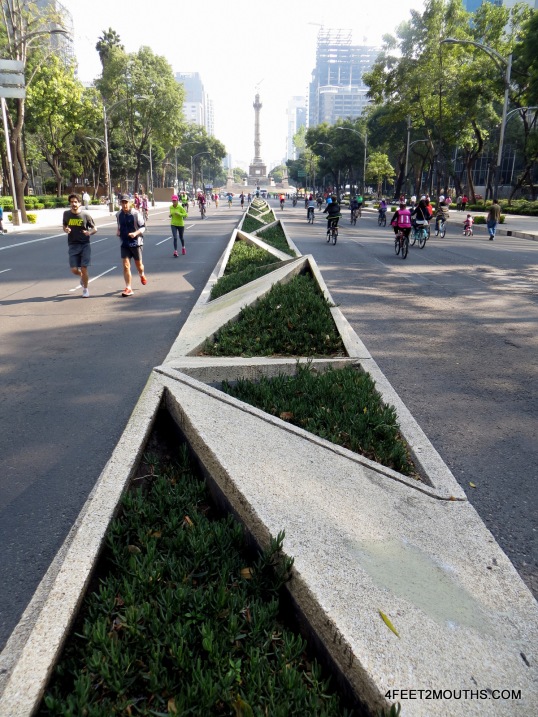
Geometric traffic divider on Paseo de la Reforma
The buildings continue to modernize as one moves further west from the Alameda, with most high rise and new construction centering on Paseo de la Reforma. This huge boulevard, punctuated with ornate glorietas (traffic circles), is generally choked with traffic. But on Sundays, from 9am-12pm, the street is gloriously bike and pedestrian-only.
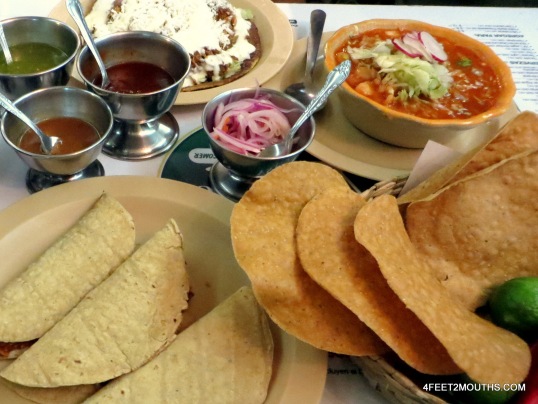
La Casa de Toño
The streets narrow again and leafy trees provide shade in the Zona Rosa neighborhood, which contains an unexpected mix of embassies, Korean businesses and gay bars. It’s also home to the first restaurant we ate at in DF, La Casa de Toño. There is a perpetual crowd of people waiting outside but it goes by quick and the service is prompt and friendly. We gorged on sopes, tostadas, and pozol (a pork and hominy stew).

Tclayuda in the bosque
DF is a sprawling city so accordingly the Bosque de Chapultepec provides sprawling green space in the form of a huge wooded park. This name is a mix of Spanish and Nahuatl translating to Grasshopper Forest and has been an important site since pre-Hispanic times. Today, the park is dotted with museums and cultural institutions and each major walkway is lined with vendors selling everything from face painting to knickknacks to snacks. We of course focused on the snacks : ) We gravitated to a tclayuda stand with lots of turn over. Tclayudas are similar to tostadas with a crisped, rustic tortilla being smeared with a thin layer of mashed beans, then topped with onions, salsa, cream and queso fresco (fresh cheese). A light, healthy-feeling snack.

Late night gordita
While the city center shows the colonial heart of DF, and Paseo de Reforma it’s economic strength, then the Roma and Condessa areas are its youthful hipness. Our Roma-located hostel was a short walk to many stylish restaurants, bars and coffee shops. While they were enticing, we didn’t actually go to many of them as we were hard bent on eating only the most authentic and delicious food we could find. Often, this was on the street, which is how we found ourselves gulping down gorditas (literally little fatties) late one night on the walk between our hostel and the metro. The masa (cornmeal dough) was being formed right in front of us, fried, then stuffed with a delicious filling of carnitas (braised pork) before a final pass on the griddle. Topped with salsa, washed down with Senorial (Nathan’s favorite mexican soda), what more could you ask for?

Amsterdam Street in Condessa
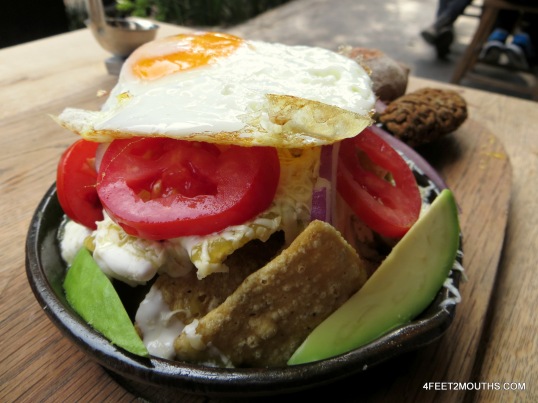
Chilaquiles
Beyond just the food scene, Roma and Condessa are full of beautiful tree-lined streets that are perfect for wandering. We often found ourselves drawn to Amsterdam Street, an oval street that encompasses Parque Espana. It has a graveled path down the center for runners, pedestrians and dogs to meander without the congested traffic persistent in other parts of the city. It was around Amsterdam Street that we often did plonk ourselves down at one of the aforementioned stylish cafes to watch the world go by. One morning while we walked in the neighborhood, we stopped to order a favorite breakfast of mine, chilaquiles. Fried tortilla strips are topped with a tomatillo sauce, cream, cheese and egg are mixed for a most satisfying way to start the day.

Trip planning over café and conchas
I’m realizing that this is a huge post, but perhaps that gives a sense of the scale of DF as it’s one of the biggest cities in the world. We barely scratched the surface yet still experienced so much. And this post doesn’t even cover the outer neighborhoods or pyramid excursions or the amazing array of tacos yet! But we’ll get there. All in due time.
